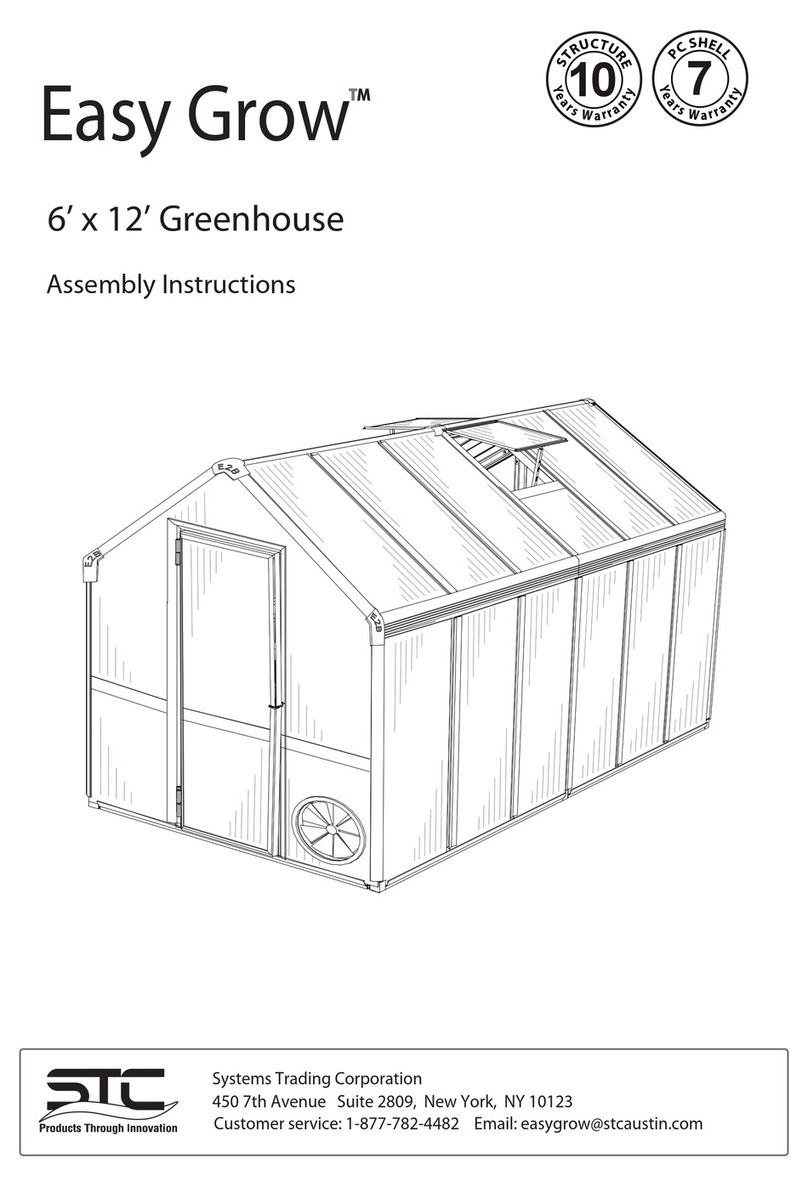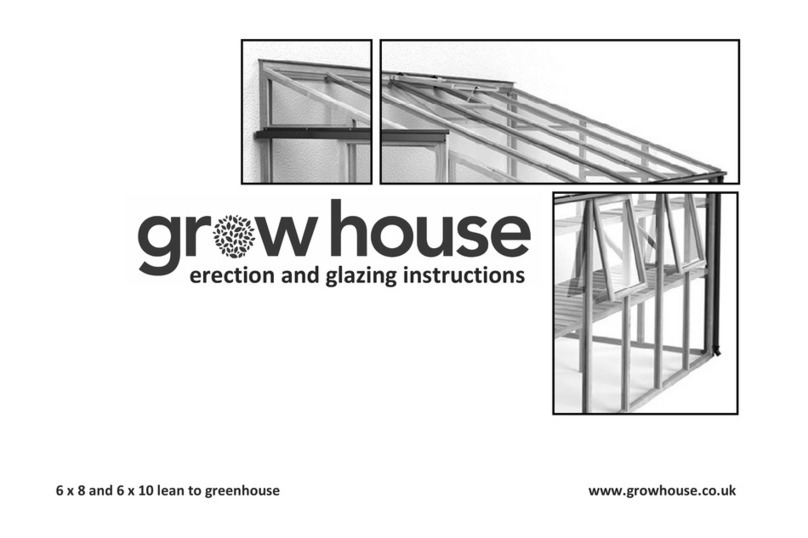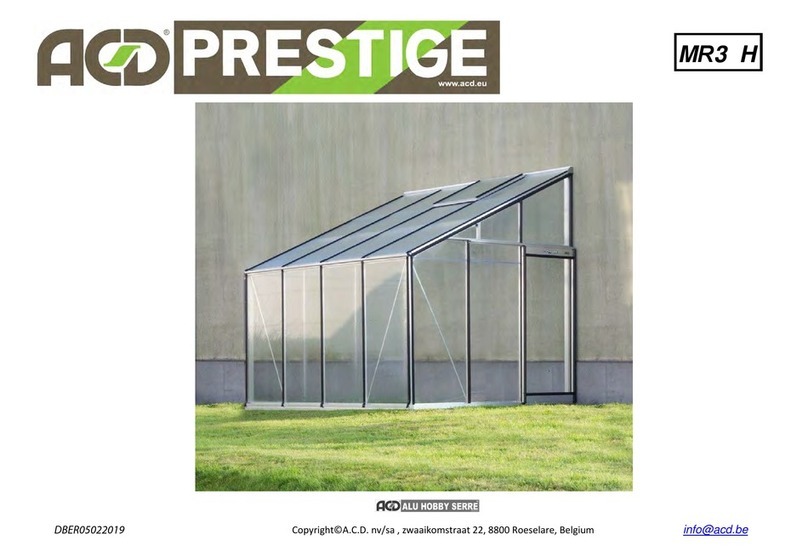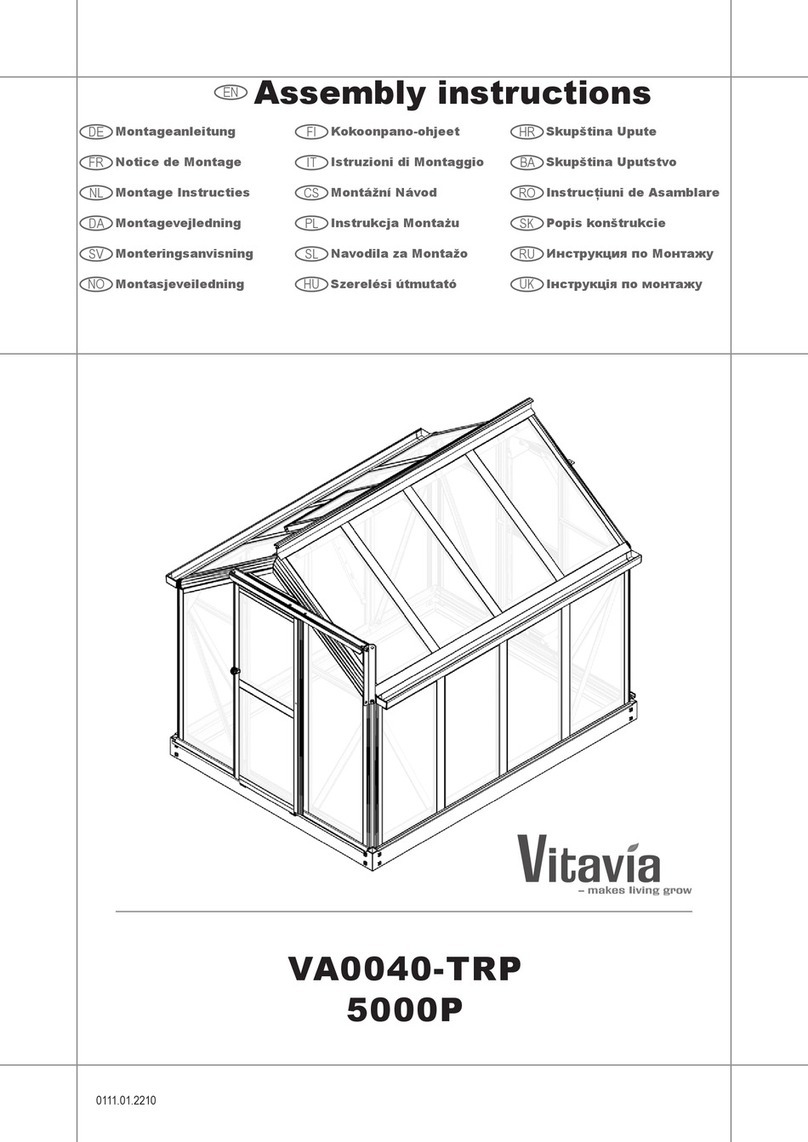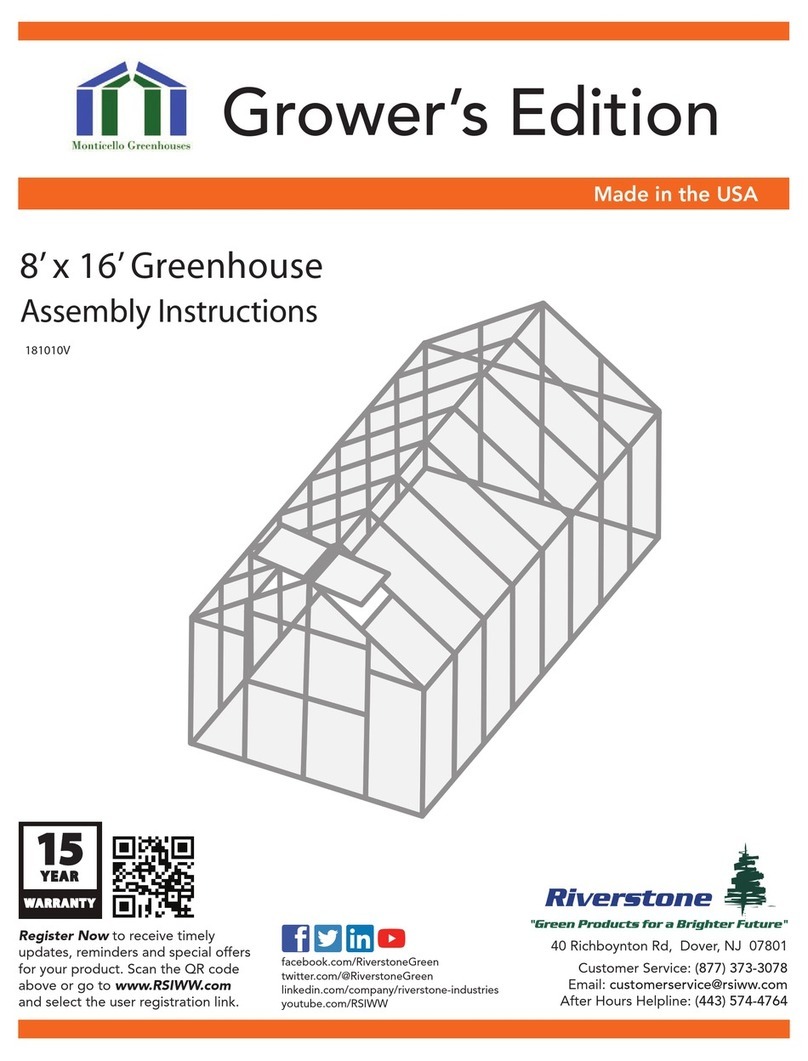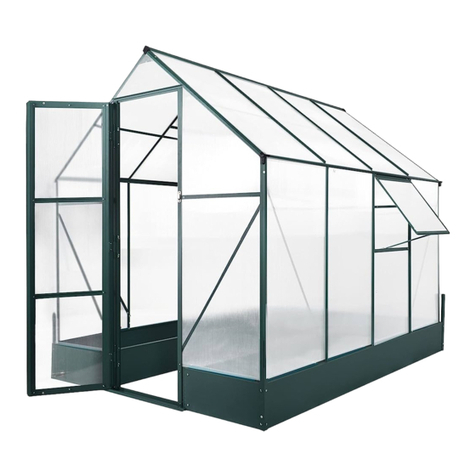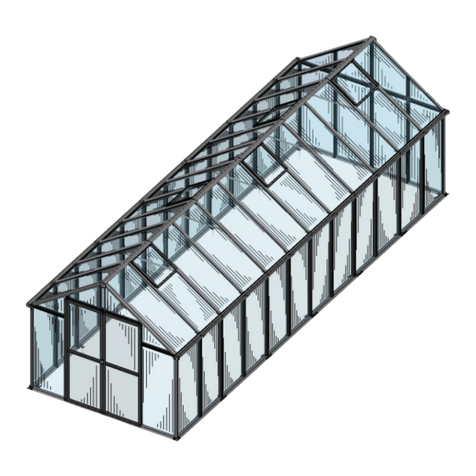IV. Preparation FAQs
Can I assemble the tunnel on my own?
At least two people are required to assemble the structure and install the polythene sheet.
Can I assemble the polytunnel on any surface?
This kit comes with ground pegs so the polythene is trenched into the ground. Choose a flat area or
level the ground if necessary. To build a tunnel on a hard surface or concrete pads you need
mounting plates and a lower rail to attach the polythene on the sides. Call the ACME Tunnel sales
team or visit our website for more information.
How deep do I need to dig the trenches?
The trenches should be at least 30cm (1ft) deep and 30cm (1ft) wide.
What are the best conditions to build the tunnel?
It is easier to dig the trenches and drive the foundation pegs in the ground when the soil is soft and
moist, but not soaked.
Choose a still day so the polythene does not flap when you install it. An excessive flapping motion
can weaken the sheet at its folding seams, causing rupture when pulling on the polythene.
Like most plastics, polythene film expands when warm and contracts when cold. To avoid a loose
and crinkly film during summer days, stretch the polythene on the frame on a warm and sunny day
(> 20 ºC). As temperature reduces, the film contracts and strengthens the structure. If the weather is
cool when you install the polythene, preheat it in a heated room before installing.
How wide should the doors frames be?
The air in a polytunnel can become excessively warm, dry or humid, so it is critical to allow for
adequate ventilation. We recommend to set the door posts as far from each other as possible and
install a door at each end of the tunnel.
We recommend that all the persons involved in building the polytunnel watch the Polytunnel
Construction video guide on ACME Tunnels' YouTube Channel. !




